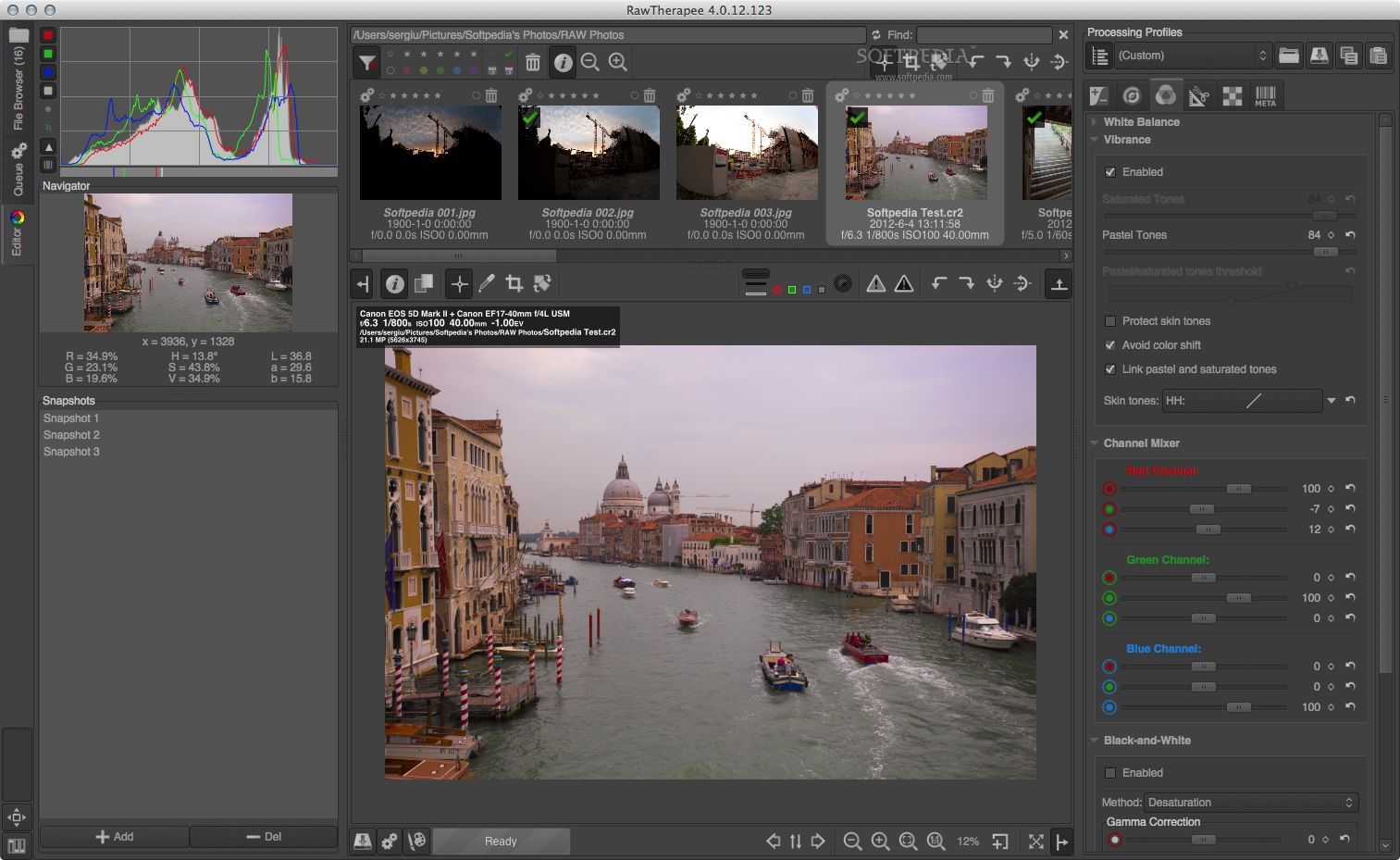


And, because it is done on your computer, there’s much more processing power available than a camera can possibly provide. These factors make it easy to correct errors in exposure, bring out details in highlights and shadows, remove colour casts and make your digital photograph look like the scene you envisaged. The same is true for contrast and sharpness adjustments ““ and also the image colour space.

The file is tagged”¨with the camera’s setting but the actual image data has not been changed.”¨So you can set any colour temperature you like without degrading the image. Raw files don’t have any white balance settings. Consequently, a raw file will provide much more latitude for making adjustments to brightness, contrast and colour levels before any processing artefacts become visible. Shooting raw files gives you the option of converting them into 16-bit images which means the file has 65,536 levels of brightness per colour channel, compared with JPEGs, which provide 256 brightness levels per channel. The compression is ‘lossless’ which means all of the original image data is usable by the photographer for subsequent editing. Nothing is discarded, even when the image processor compresses the raw file to make it smaller. Raw files contain the image data as it is captured by the camera’s sensor. Note how much more highlight and shadow detail can be extracted from this file. The lower image comes from a raw file recorded simultaneously with the JPEG. The enlargement on the right shows how both highlights and shadows have been ‘clipped’. The top image has been cropped from a high-resolution JPEG taken with a 16-megapixel Micro Four Thirds system camera. These images illustrate the main differences between JPEG and raw files. Each time a JPEG file is re-saved, more data will be lost and the discarded data can never be recovered. Photographers have some control over JPEG compression through the Image Quality setting.īut JPEG compression is always ‘lossy’. The processor then down-samples the image from 12 or 14 bits of information per pixel (as captured by the camera) to 8 bits (the default bit depth for JPEGs) and compresses it, discarding data that is unlikely to be missed by the human eye. These settings are locked into the image file. When recording a JPEG image, the camera’s microprocessor converts the raw image data into RGB pixel values (a process known as demosaicing) then applies white balance, saturation, sharpening and other adjustments according to pre-determined formulae. Advanced cameras let you choose the size and quality of the JPEG image so you can opt for the biggest and best JPEGs or the smallest JPEGs for online sharing and when storage space is limited. Photographers interested in printing their pictures will usually record raw files at the same time as the regular JPEG format, and most serious cameras include a RAW+JPEG setting for this purpose.


 0 kommentar(er)
0 kommentar(er)
